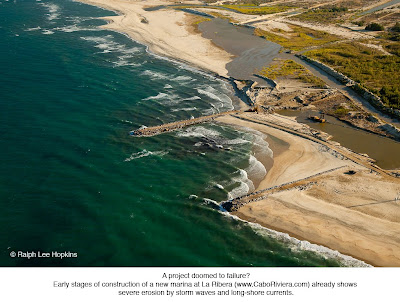
Imagine jumping in the sea and swimming with the world’s largest living fish. The water took my breath away as I slipped over the side of the panga into Bahia de La Paz in Baja California. When the bubbles cleared I could see a 25-foot shark with a mouth large enough to swallow a washing machine. And it was swimming directly toward me, mouth agape. So I did what any photographer would do, I started shooting.
Whale sharks are listed as vulnerable on the IUCN RED List and reportedly grow to 20 meters (over 60 feet) in length and live to 100 years. Gathering here are smaller, juvenile animals that come to these waters offshore La Paz each year to feed. Although they are filter feeders—making their living almost exclusively on plankton, the smallest creatures in the sea—it still makes you think when you are in the water with a fish bigger than your boat.

There’s something special about this area of the Gulf of California that attracts a great diversity of marine life, from sharks and rays, to sea turtles, whales, and dolphins. Like a giant catcher’s mitt, the sandy shallows along the El Mogote Peninsula is chock full of plankton, the base of the food chain. In essence, this area is a whale shark nursery that demands special protection to ensure their long-term survival.

The arrival of the young whale sharks each year is a spectacle that is supporting a growing eco-tourism industry in La Paz. The problem, however, is that this area is not officially protected by the Mexican government, and there are no enforcement of rules and regulations for boat traffic. Boats of all kinds zoom through the area (over 60% of the whale sharks have scars from impacts with propellers). And development onshore is rampant, with marinas, condos, desalination plants and golf courses being built along the coast with little or no concern for the impact on the biodiversity offshore. Like the Paraiso del Mar development on the El Mogote peninsula.
Amazingly, few people know about the whale sharks, and the thrill of being with them in the water. Count me as one of them until today. And much remains unknown about their migration patterns and where they go when they leave Bahia de La Paz.

Deni Ramirez is working to change all that. She’s a PhD student at the Centro de Investigaciones Biologicas del Noreste (www.CIBNOR.mx) in La Paz, and has been working in the area since 2002. Working alongside manta expert Paul Ahuja, she is project leader of WhaleSharkMexico.com that includes other local experts and students. Their work is supported by the Save Our Seas Foundation and their Adopt-a-Whale Shark program that helps buy satellite tags for tracking the movements of individual animals.

Known to migrate very long distances, her satellite tagging work has documented movements with the Gulf of California between La Paz and Bahia de Los Angles, another critical area for whale sharks to the north. Her photographic identification work has recognized around 95 individuals in the La Paz area and, with the help of trained local tourism companies (Prestadores de Servicios Turisticos de Bahia de los Angeles), more than 134 whale sharks have been identified in Bahia de Los Angeles. Other areas where whale sharks congregate in the Gulf include the Espiritu Santo archipelago nearby and at Gorda Bank to the south along the East Cape region.
Considering these key whale shark areas from north to south, the whale shark is an important and potentially charismatic species that could help communicate the link between the sea and land. For example, Deni has documented that whale sharks in several areas directly offshore major developments (Puerto Los Cabos and Costa Baja) have changed their habits and moved away from those areas.
Genetic studies have shown that the whale sharks in the Gulf are from the same population, with 30% if the individuals returning each year to Bahia de La Paz. If her continued research reveals that whale sharks are year-round residents of the Gulf, this will have an important impact on the creation and management of new marine protected areas within the Gulf of California.
Jumping over the side of the panga with spear-gun in hand, Deni swims quickly toward Tiki Tiki, the third and final whale shark targeted for a satellite tag this season. It's over in seconds, the tag successfully deployed. With a skin layer almost 4 inches thick, the animal doesn't even flinch and keeps swimming effortlessly through the turquoise water. In 9 months the tag will automatically release and float to the surface, uploading all the data to the satellite. One can only guess what adventures Tiki Tiki will have had during this time, and what his movements will reveal to Deni about the life and times of the world's largest living fish.













